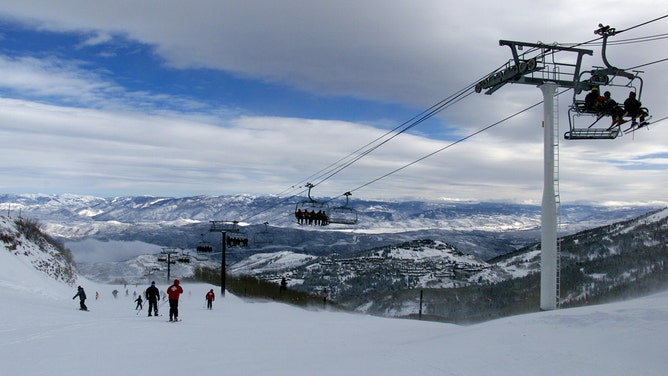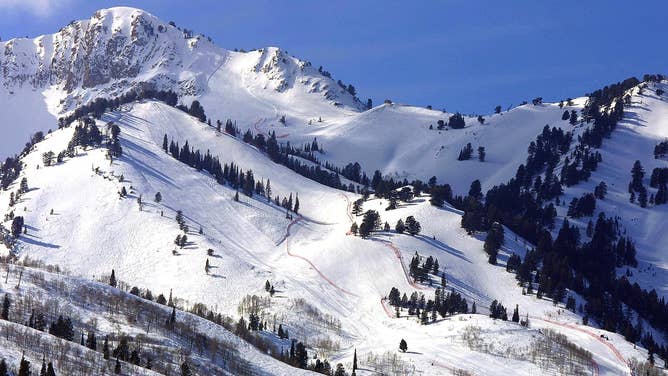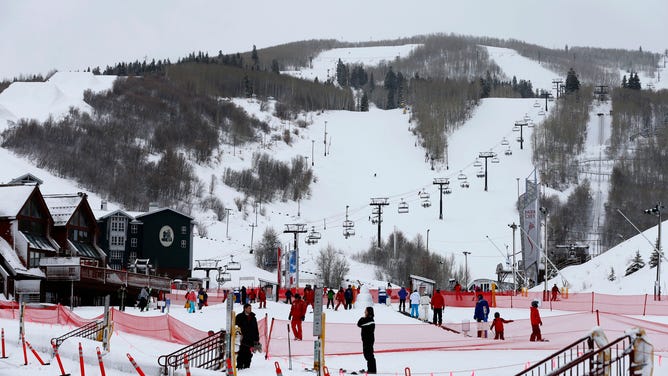This is what brings ‘Goldilocks Storms’ for snowfall that’s ‘juuust’ right on the ski slopes
Some winter storms lead to a better day on the slopes than others.

A break in the first storm of the season, brings a picturesque look to the top of the mountain on opening day at Park City Ski Resort in Utah Nov. 24th.
(Gina Ferazzi / Los Angeles Times / Getty Images)
SALT LAKE CITY - Skiers and snowboarders know to scour the forecasts in the hopes that the next winter storm to plaster the mountains with a fresh coat of snow is just around the corner. But some storms lead to a better day on the slopes than others.
We asked University of Utah Atmospheric Sciences Prof. Jim Steenburgh, who authored the book "Secrets of the Greatest Snow on Earth" (and goes by "@ProfessorPowder" on Twitter), what are the most desirable conditions for skiers and snowboarders, and what should they look for in a forecast to start planning for that perfect day on the slopes.
First of all, not all skiers root for the same snow conditions.
"It depends on the skier and what their interests are," Steenburgh said. "If you were an alpine ski racer -- somebody who races like downhill or giant slalom or race that you would see on the Olympics -- you actually want a really hard, icy, durable surface."
That surface would provide the least friction and give you the most speed for racing.

Julia Mancuso of the USA in action on her first run of the Women's FIS Alpine World Cup Slalom on November 29, 2003 at Park City ski resort in Park City, Utah.
(Jed Jacobsohn / Getty Images)
"But it would be the worst thing for recreational skiers to be on," he said.
Instead, they want deep, powder skiing.
"Where the snow is what we call bottomless, which means that the skis are floating in the new snow, they're not riding on the underlying surface," he said.
Beginners do better with corduroy
What about if you're learning to ski?
"Powder skiing is difficult for developing skiers," Steenburgh said. "A lot of developing skiers prefer what we call ‘corduroy,’ which is well-groomed; looks like corduroy, but very carvable, meaning the ski (would) get a pretty good edge in the snow."
But overall, "the skiers in the know, they really want to ski deep powder. That's what I look for."
How do we get that deep powder?
"You need about 10 to 12 inches of new snow before really you start to really get ski floatation, so that's kind of my minimal threshold before you really start to get good deep powder skiing," Steenburgh said. "Obviously, if you're in the backcountry, you might not need that much overnight because maybe it snowed previously. But most ski resorts, they get tracked out now, so you want a pretty good dump of at least 10 to 12 inches."
Finding the "Goldilocks Storms" and the type of storms to make it happen
Yet Steenburgh says there can be too much of a good thing.
"You don't want enormous dumps either because, in those situations, the avalanche danger is too high to get terrain open," he said. "So there's what I call these 'Goldilocks Storms' -- they're not too big, they're not too small, they're just right. And those are probably in like the 10- to 24-inch range, and beyond that, it gets a little unmanageable."

This photo shows Snowbasin Ski Resort, Snowbasin, Utah.
(GEORGE FREY/AFP / Getty Images)
It's even better skiing conditions if the temperatures start close to freezing but turn colder as the storm progresses. Snow that falls at temperatures near freezing will have a higher density than snow that falls when it's well below freezing, as warmer air can hold more water than colder air.
"You want the density of the snow to be thickest at the base and get lighter as you near the top of the snow," Steenburgh said. "We call that 'right-side up' snow. That's like the crème-de-la-creme of powder skiing."
And Utah is an excellent place to find it.
"Utah's got such a great reputation for powder skiing is we get a lot of the 10-inch snowstorms -- those so-called Goldilocks storms -- but we also have weather patterns that favor these 'right-side-up' snowfalls."
Not all precipitation is your friend
Aside from a big heatwave, what's the weather conditions skiers hope to avoid?
"I think the worst-case scenario is probably rain on snow and followed by freezing," Steenburg said. "We sometimes call that 'coral reef' conditions because the snow gets, especially if it's been skied, very uneven… Once that freezes, it's really rough and very, very difficult to ski on."
And then there's the upside-down snow when the storm begins cool with lighter-density snow but warms as the storm progresses, and the snow gets denser on the surface.

PARK CITY - JANUARY 30: In this file photo of skiers at the Park City Mountain Resort on January 30, 2014 in Park City, Utah.
(George Frey / Getty Images)
"In those situations, skis tend to dive into the snow, and the powder skiing is a lot harder," he said. "That's kind of the worst-case scenario. Or the very worst case: You put rain on top of that new snow, and now you really have a high-density layer on top."
And it's not just the skiers who get cranky in that situation.
"Snowpacks tend to get cranky when there are rapid weather changes," he said. "If it snows a lot, if it blows a lot, if it warms up rapidly or if it changes to rain, those are all like red flags for avalanche conditions. And so every morning at ski areas all over the western United States, they're monitoring the weather, watching the snowfall, watching the rainfall, watching the temperatures, and they're trying to prepare their resorts to be safe places for people to ski, and they do a pretty good job at it."
So scour the FOX Weather forecasts, look for that storm that is pegged to bring 10-12 inches of snow with colder air sweeping behind, clear your calendar, and head to the slopes!